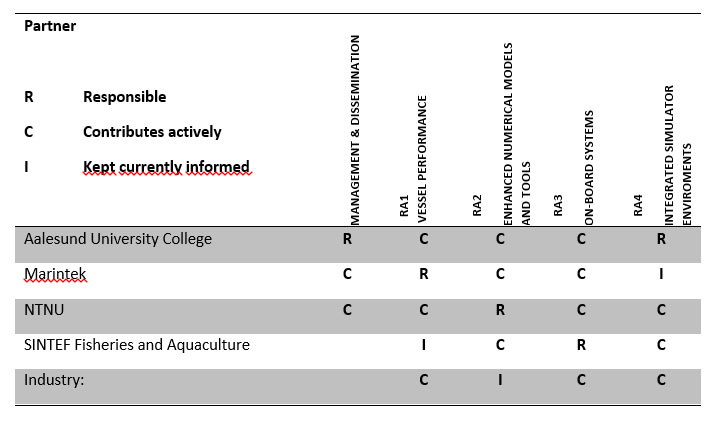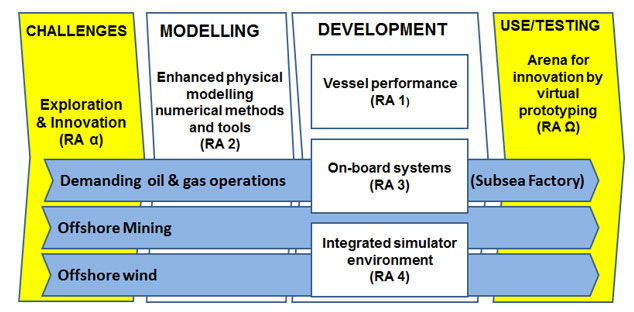Organization - MOVE
Organization
The Centre will be managed by an executive steering board and a centre administration. The executive board will consist of representatives from the research partners and industry. The centre administration consists of the project leader and the research area leaders. The Centre brings together the following major partners within marine and maritime research in Norway, each contributing with complementary knowledge to the centre:
NTNU, Department of Marine Technology has world leading competence in methods for computation of hydrodynamic loads, marine operations in extreme seas as well as control of vessels, robotics and autonomous vehicles with manipulation capabilities.
SINTEF Oceans research within the fields position keeping and marine operations the last 30 years has been a resource for operators and contractors, and for development of specialized vessels and equipment.
SINTEF Ocean is world leading on fishery technology. Particularly, ship information systems have been developed by this institute for the last decade, and their software is extensively used in real-time applications like on-board systems and offshore training simulators.
NTNU Ålesund has a strong position within personnel training simulators and is working closely with the maritime cluster in north-western Norway. (Aalesund University College merged with NTNU 1. January 2016. The new name is NTNU Ålesund.)
The Norwegian petroleum industry is in the forefront of subsea production technology. The 590 Norwegian offshore service vessels (2013) include state of the art, highly effective work platforms.
NTNU Ålesund will be the host and prime contractor. National research partners are NTNU in Trondheim, SINTEF and MARINTEK (SINTEF and MARINTEK were merged 1. January 2017 and the new name is SINTEF Ocean). The responsibilities of each partner within the SFI are shown in Table 1. The original names of the partners are used in the Table below.

The Industrial Advisory Group (defined in the Consortium Agreement) is responsible to set up an Innovation Plan. This plan identifies marine operations with potential for improvement and innovation. The Innovation Plan will be worked out annually and new project activities within each Research Area will be defined for the following year. The idea is that the Innovation Plan shall give common goals and direction of the research. Then the Research Area leaders in cooperation with the Industrial Advisory Group will perform gap analyses to initiate sub-projects. This activity is defined as RA α in figure 2.

